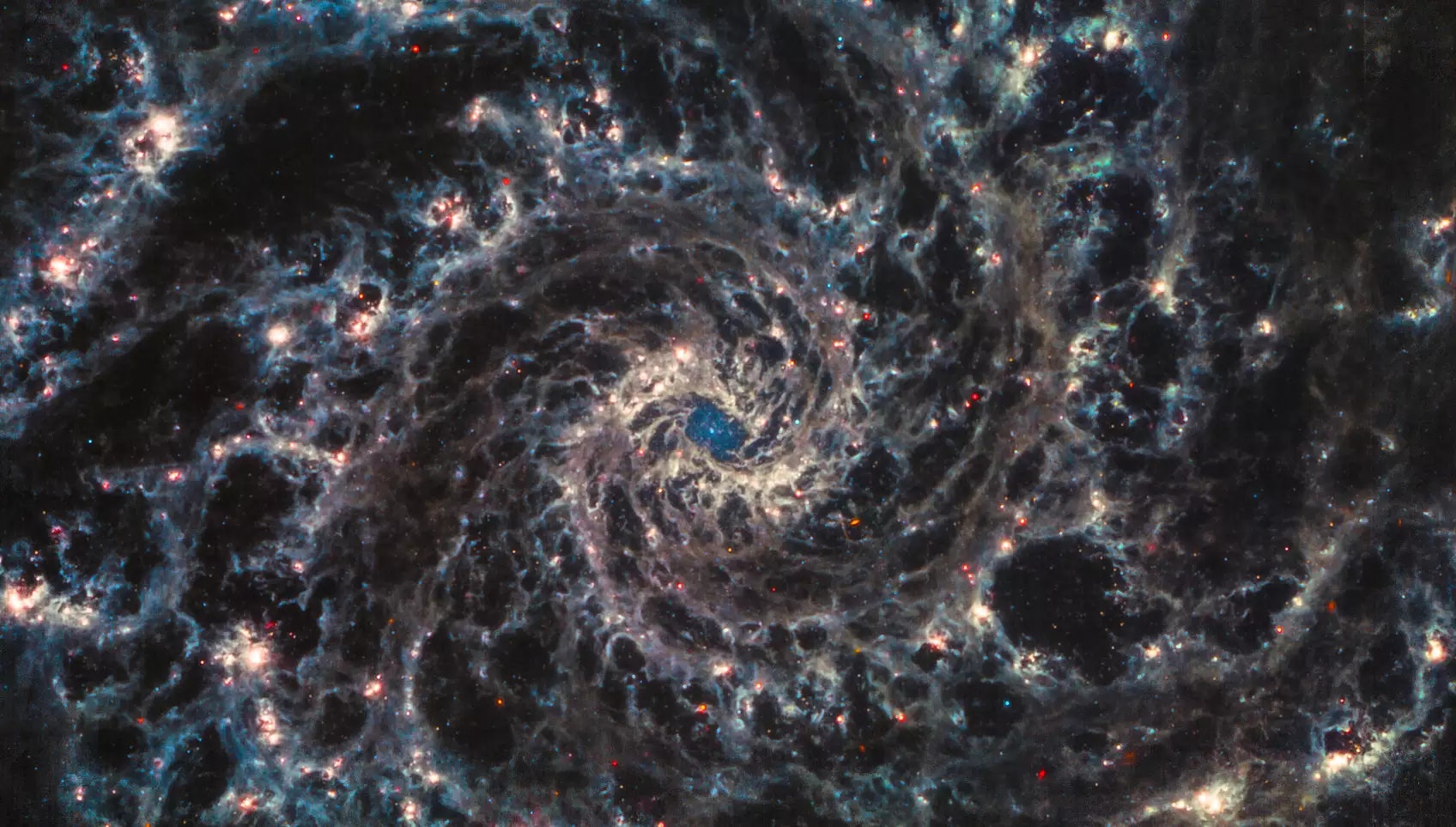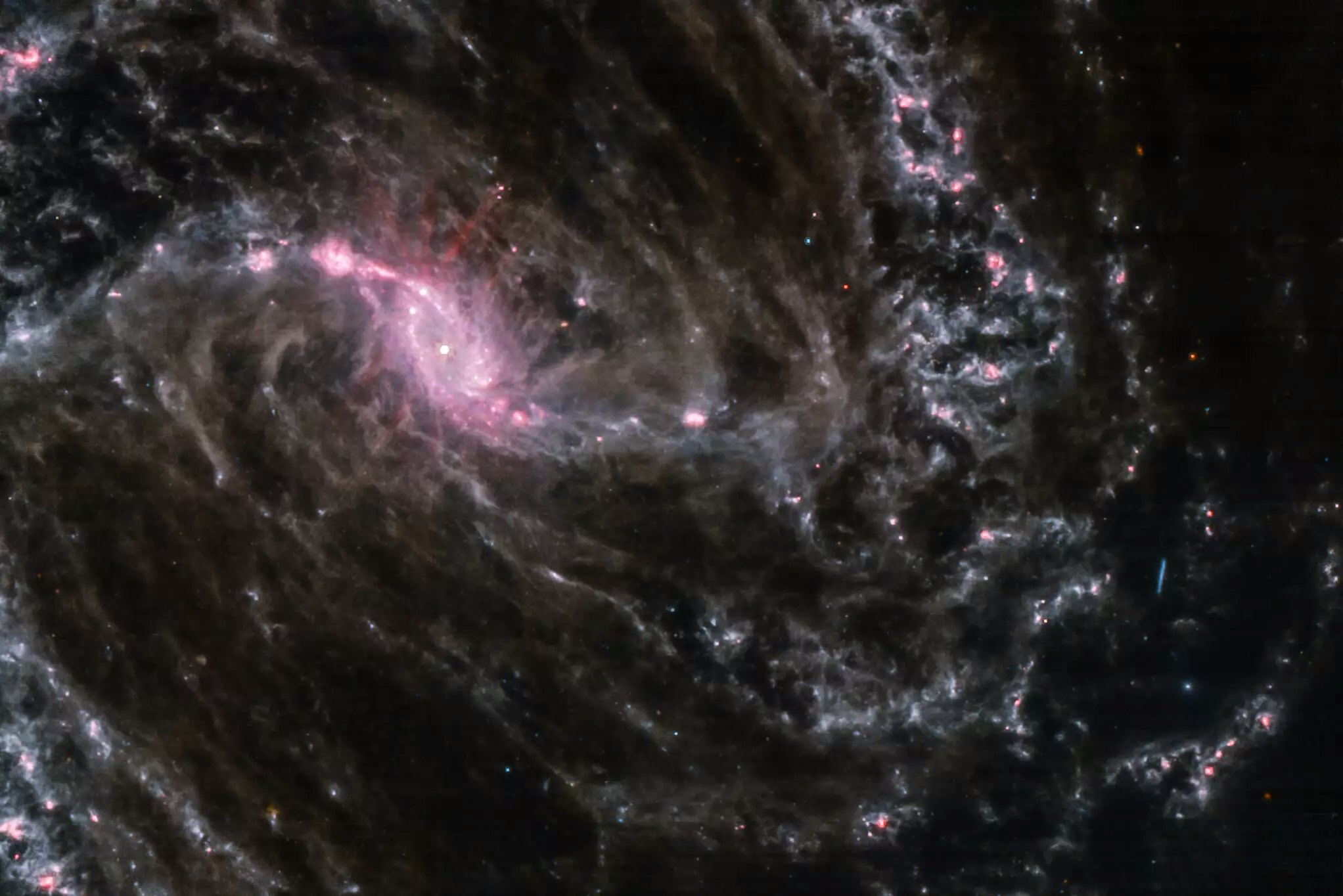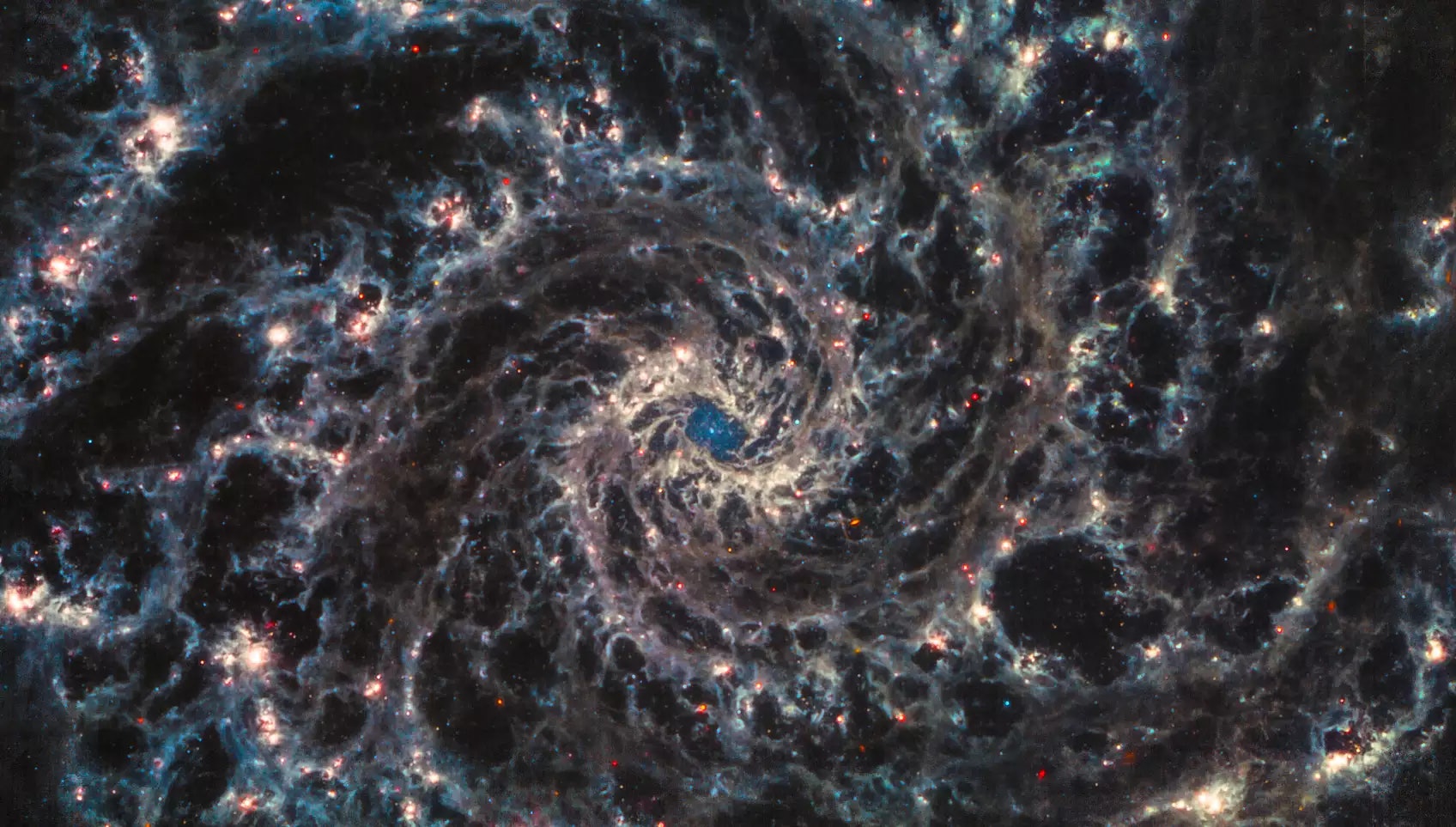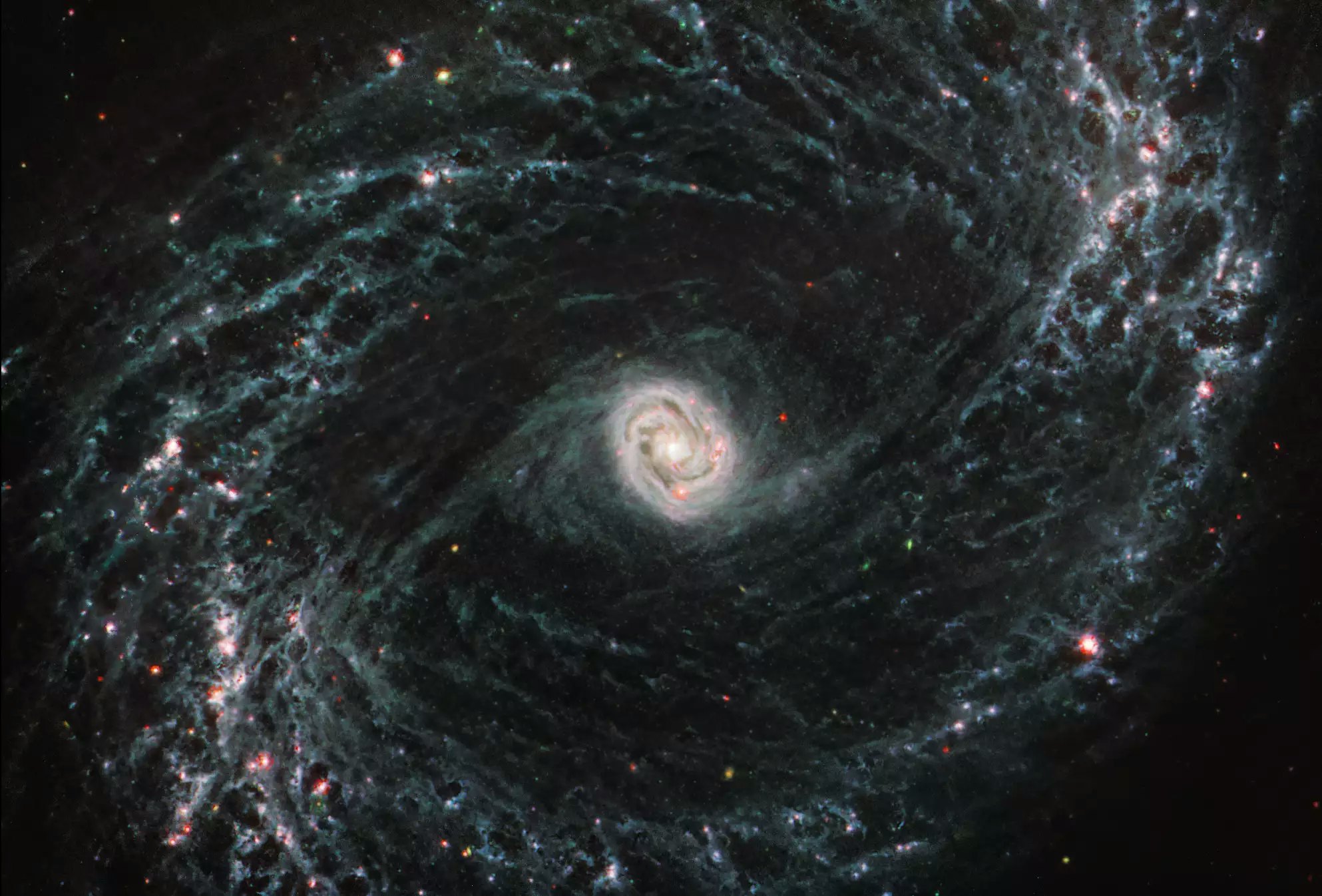
The James Webb Space Telescope (JWST) continues to mesmerize with its latest views of the Universe.
Scientists caught unprecedented sights of star-making material when they directed a JWST instrument to look at a handful of nearby galaxies. Their data revealed billowing strands of dust too faint to see with other telescopes, as well as clusters of stars near galactic hearts and ‘spurs’ where the dusty cocoons gestate new stars. These pretty visuals provide astronomers with the first steps to charting how stellar nurseries may influence the much grander shapes of their home galaxies.
Astronomers with the PHANGS survey (short for Physics at High Angular resolution in Nearby Galaxies) looked at a handful of face-on galaxies. With this imagery, astronomers are peering into stellar formation in galaxies located millions of light-years away.

They include this view of NGC 1365, a barred spiral galaxy located roughly 60 million light-years away. The bar acts like a road for the star-making material, which can make its way to the center of the galaxy and boost ongoing star formation at its core. JWST’s Mid-Infrared Instrument (MIRI) collected the data for this image.
To see the flow of dusty trails, astronomers needed next-generation instruments tuned in to infrared, a segment of the electromagnetic spectrum where the dust’s subtle heat could be detected.
“JWST allows us to precisely pinpoint the youngest stars still within their birth clouds in nearby galaxies. This capability enables us to look inside the gas and dust in gas-rich galaxy [centers] to study where and how inflowing gas is converted into stars, like in NGC 1365, and compare those results to the Milky Way,” Eva Schinnerer, PHANGS collaborator, states in a description of the images published on Thursday by the Max Planck Institute for Astronomy (MPIA). (Schinnerer is a research group leader at MPIA.)

Astronomers also looked at spiral galaxy NGC 628, known as Messier 74 or the Phantom Galaxy. To see it, JWST peered 32 million light-years away into the constellation Pisces.
Its symmetrical arms make it a “grand-design” spiral shape. A cluster of stars shine unobstructed at its core, and new stars are forming in the “spurs” of the spiral arms, according to MPIA.

Another of JWST’s first PHANGS targets (there will be a total of 19 galaxies in the survey) is the barred spiral galaxy NGC 1433.
“NGC 1433 is classified as a Seyfert galaxy, a galaxy relatively close to Earth that has a bright, active core. The brightness and lack of dust in the MIRI image of NGC 1433 could hint at a recent merger or even collision with another galaxy,” officials from the European Space Agency (ESA) wrote in an image description published Thursday.
According to MPIA, this is the first time scientists have seen the “cavernous bubbles of gas” released as stars develop and release energy.
Observatories couldn’t see the dust in these galaxies before JWST. The material was too faint to see in optical light from so far away, and wasn’t volatile enough to emit ultraviolet light. Now that JWST has rendered the star-making stuff, astronomers can come closer to connecting small-scale events like stellar births to the global appearance of a galaxy.







